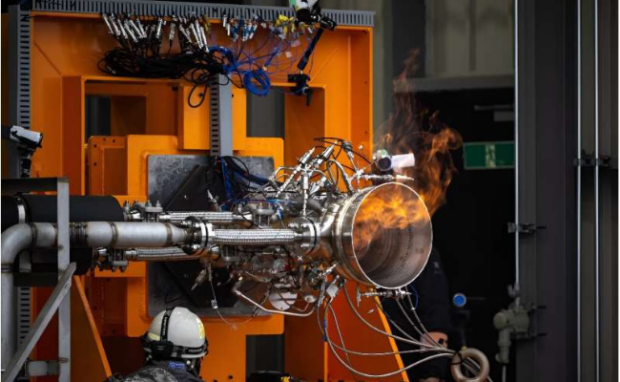Cow dung rocket engine successfully tested
Japan-based space tech company Interstellar Technologies successfully tested a rocket engine that runs on cow dung. The company converted the waste into biomethane, which fueled the machine. As a result, the firm showed its potential benefits as an environmentally friendly rocket fuel.
Space agencies have been upholding eco-friendliness in their exploration missions. That is why more countries like Japan have been developing alternative materials and fuels for space projects. Soon, this rocket engine may help developing countries start their space explorations because they could turn farm waste into rocket fuel.
This article will discuss how the cow dung rocket engine works. Later, I will cover other sustainable space projects from Japan, such as eliminating space junk and launching wooden satellites.
How does the cow dung rocket engine work?

The creation of the cow waste rocket engine starts with its dung supply chain. Interstellar Technologies (IST) worked with Air Water Group to gather biogas from local farmers.
They turned livestock manure into liquid biomethane (LBM). Aside from this fuel, the ZERO launch vehicle rocket uses liquid methane as a propellant.
This combination of renewable energy sources gives the rocket engine low cost, fuel performance, environmental impact, and availability. It uses a two-stage design incorporating a pintle injector, reducing the number of components and improving combustion efficiency.
You may also like: Nano rocket thruster uses water as fuel
The pintle injector delivers propellants (oxidizer and liquid fuel) into a rocket engine’s combustion chamber in a controlled manner. “The number of components has been reduced to one-tenth of conventional engines, fundamentally lowering the manufacturing costs of a rocket engine, estimated to constitute half of the overall expenses,” the IST said.
Interesting Engineering said cattle manure could significantly boost carbon neutrality. Many experts have been warning about cow dung’s methane emissions as it adds to global warming.
As a result, the cow-dung rocket engine reduces Japan’s carbon emissions while providing it with more space rocket fuel. Its success will contribute to the success of the ZERO launch vehicle rocket’s 2025 launch.
Other Japanese space projects
Did you know we’ve been polluting outer space? We’ve been launching rockets and satellites into outer space, which leave all sorts of debris.
If nobody clears them, future rockets and satellites may crash into them. Fortunately, Astroscale Japan will launch the ADRAS-J satellite to eliminate space junk.
They will collect data on space debris, and then the company will develop a mechanical arm to pull them toward the Earth’s atmosphere. Its heat and pressure will disintegrate the debris. Here’s how the process works:
- The servicer has “proximity rendezvous technologies and a magnetic docking mechanism” to remove defunct satellites and other large pieces of debris.
- Meanwhile, the client satellite has a ferromagnetic plate that docks onto a space object.
- Then, the servicer descends into the Earth with the client and its space garbage until they disintegrate in the atmosphere.
Japan also thought we should use biodegradable materials so that we leave less garbage in future space missions. That is why Kyoto University scientist Koji Murata and his team are developing wooden satellites!
You may also like: SpaceX rocketship launches astronauts on NASA mission
“When you use wood on Earth, you have the problems of burning, rotting, and deformation,” he said. “In space, you don’t have those problems. There is no oxygen in space, so it doesn’t burn. No living creatures live in them, so they don’t rot.”
Murata stated the strength per weight of wood is the same as that of aluminum. That means it is a viable space construction material. Moreover, he and his team tested wood at the International Space Station and found it is remarkably resilient in outer space.
Japan Aerospace Exploration Agency (JAXA) and NASA will launch the wooden prototype LingoSat next year. The LingoSat passed initial safety evaluations with no critical concerns.
Conclusion
Japan successfully tested a rocket engine that runs on cow dung. Multiple firms and farmers collaborate to turn that waste into biomethane to fuel the machine.
Elon Musk’s SpaceX also uses Interstellar Technologies’ combustion technique for its rockets. Soon, those US-based rockets may run on this sustainable fuel, too!
Space research and exploration have been advancing significantly for many months. Catch up with those space updates and other digital trends at Inquirer Tech.